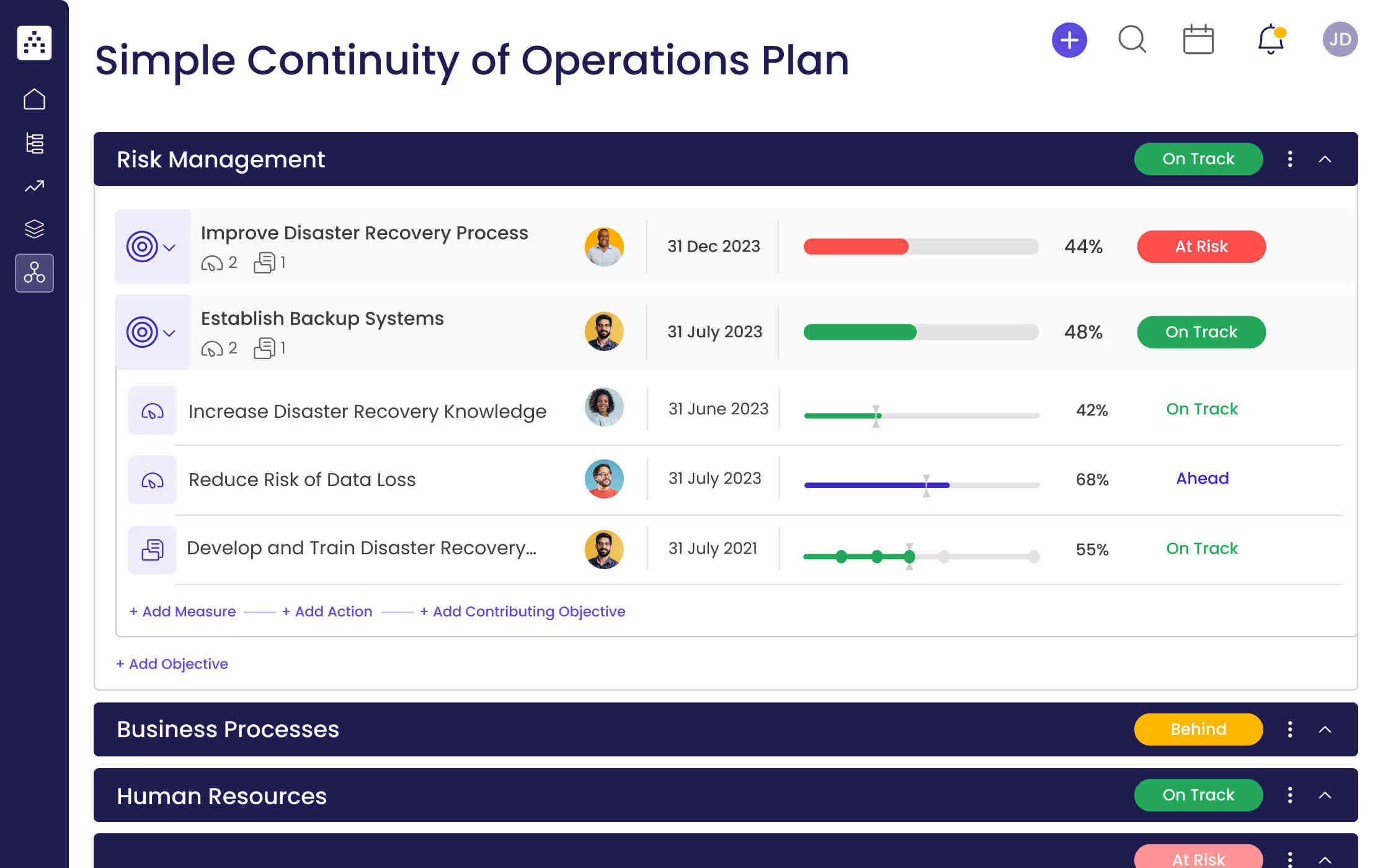What is a Simple Continuity of Operations Plan?
A simple continuity of operations plan (COOP) is a plan outlining key procedures, resources, and protocols necessary for maintaining essential functions during disruptions or emergencies. It is a critical part of any organization’s risk management strategy and should be updated regularly. A well-crafted COOP should help organizations prepare for, and respond to, any type of disruption or emergency, including natural disasters, pandemics, civil unrest, or cyber threats. It is important to have a plan in place so that your organization can continue to deliver essential services and operations in the event of an emergency.
What's included in this Simple Continuity of Operations Plan template?
- 3 focus areas
- 6 objectives
- 6 projects
- 6 KPIs
Each focus area has its own objectives, projects, and KPIs to ensure that the strategy is comprehensive and effective.
Who is the Simple Continuity of Operations Plan template for?
This simple continuity of operations plan template is designed for use by any organization looking to create an effective plan for managing disruptions and emergencies. It is an easy-to-use and comprehensive plan that outlines the necessary steps for creating a successful COOP. This template can be used as a starting point for any organization, regardless of size or sector, looking to create a solid COOP.
1. Define clear examples of your focus areas
When developing your continuity of operations plan, it is important to define the focus areas that will be addressed. Focus areas should include topics such as risk management, business processes, and human resources. Each focus area should be addressed in detail, with objectives that are specific and measurable.
2. Think about the objectives that could fall under that focus area
Objectives should be clear, measurable, and achievable. Examples of objectives could include improving disaster recovery processes, establishing backup systems, developing standard operating procedures, and automating workflows.
3. Set measurable targets (KPIs) to tackle the objective
Once objectives have been identified, it is important to establish measurable targets or key performance indicators (KPIs). KPIs should include an initial measurement, target measurement, and unit of measure. For example, a KPI measure for increasing disaster recovery knowledge may include an initial measurement of 0%, a target measurement of 100%, and a unit of measure of “%”.
4. Implement related projects to achieve the KPIs
Once KPIs have been established, it is important to develop and implement the projects necessary to achieve the objective. Projects should include specific and measurable actions, such as developing a disaster recovery team or automating workflows. Each project should be completed in a timely manner, with proper tracking and planation of all actions taken.
5. Utilize Cascade Strategy Execution Platform to see faster results from your strategy
Cascade Strategy Execution Platform is a powerful tool that can help organizations quickly and efficiently create, update, and monitor their continuity of operations plans. With Cascade, organizations can easily track progress and ensure that all objectives are being met in a timely manner.


